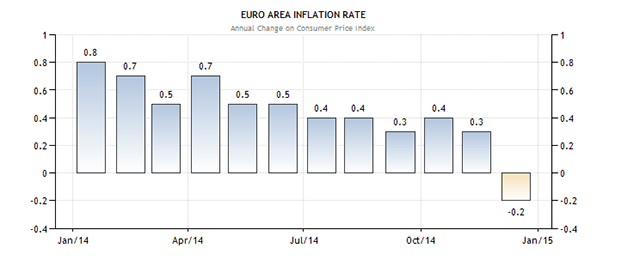“This year, I’m not going to just sit there” <=== Every Central Banker’s new year’s resolution, apparently,” joked Bloomberg’s Lorcan Roche on his Twitter feed on Wednesday.
Apparently the time has come for the ECB to embark on real stimulus. The question is, will it be enough? Analysts are talking about €500-600 billion sovereign bond purchases. For many, the amount is too little.
“UK’s QE was > 30% of its GDP, and the battle there is not over. 500bn is about 5% of Eurozone GDP,” points out Tony Yates, former analyst at the BoE and reader in Economics at the University of Bristol.
Some point out that QE is always QE.
“It is possibly better than doing nothing, now that the economy is facing some very serious risks, although if we took into account that “money” is scarce (something that didn’t happen since Bretton Woods), this is not the best way to optimize resources,” JP Morgan sources commented.
The ECB has declared its intention to expand its balance sheet by €1.1 trillion so it would reach the same size as in March 2012. Given that the market for covered bonds and ABS is small in Europe compared to the US, some analysts believe that today the Frankfurt-based institution will be just unveiling the top of the iceberg.
One of the crucial and most problematic aspects of the plan is that the ECB may ask national central banks to take on the losses for their national debt, which some see as Mario Draghi’s bending to German, Austrian and Dutch interests.
“It’s not so clear to what extent this is about avoiding difficulties with the German constitutional court, which would be a legitimate concern, or about being swayed by improper and disproportionate pressure from German Governing Council members or politicians, which would not be legitimate, as Orphanides pointed out today,” Yates argues.
Some analysts are saying that NCB QE is actually likely to be more effective than ECB level QE. Yates disagrees.
“I guess there are two main channels that I subscribe to. One is signalling about long rates. Benefits from that now are likely to be very small, since EZ yields are so low already. The second is taking illiquid and risky instruments out of private sector hands. Risk transfer is much less without centralised purchases and sharing out of the consequences of default.“






Be the first to comment on "ECB’s time for truth"